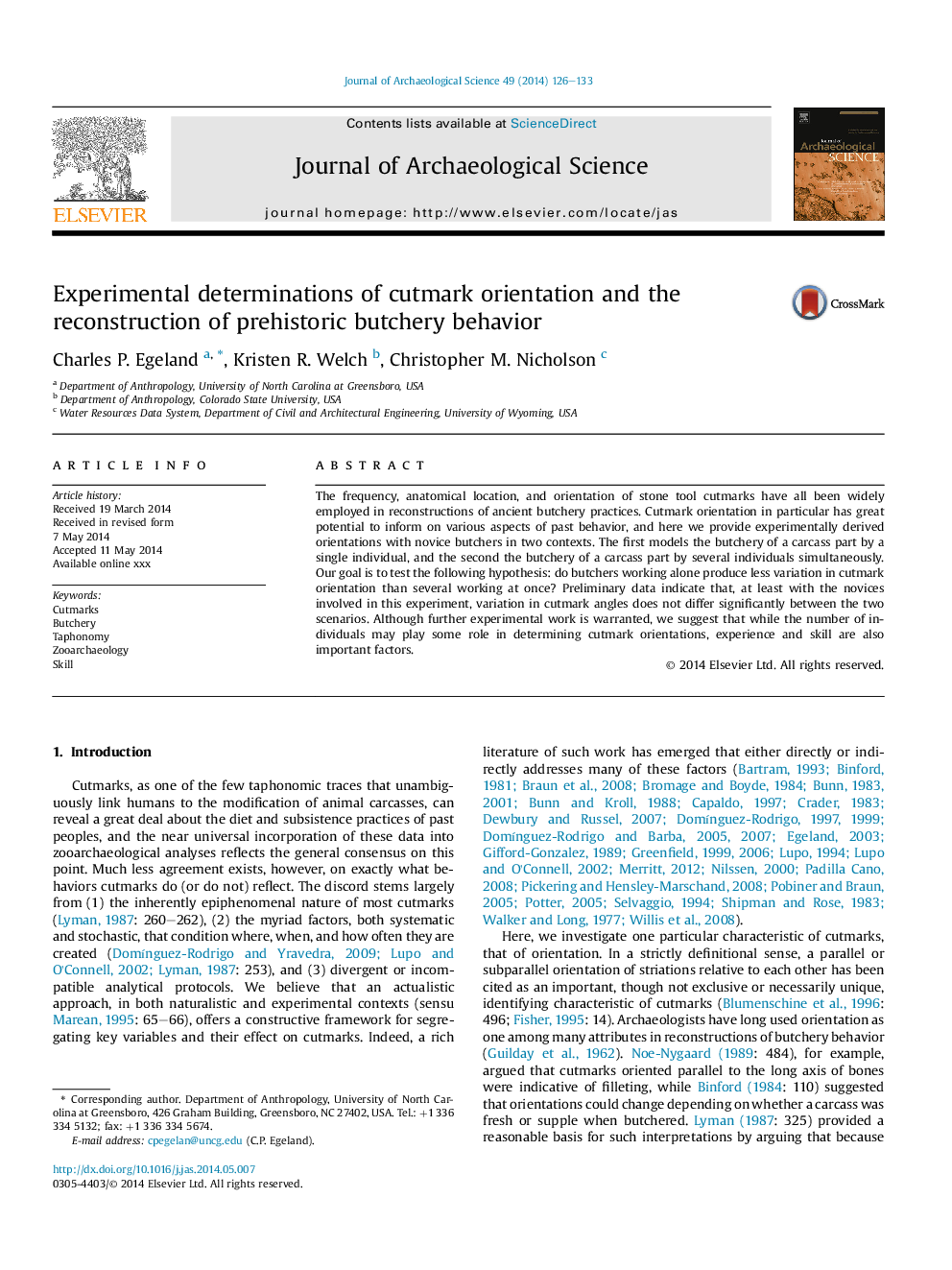| Article ID | Journal | Published Year | Pages | File Type |
|---|---|---|---|---|
| 7442941 | Journal of Archaeological Science | 2014 | 8 Pages |
Abstract
The frequency, anatomical location, and orientation of stone tool cutmarks have all been widely employed in reconstructions of ancient butchery practices. Cutmark orientation in particular has great potential to inform on various aspects of past behavior, and here we provide experimentally derived orientations with novice butchers in two contexts. The first models the butchery of a carcass part by a single individual, and the second the butchery of a carcass part by several individuals simultaneously. Our goal is to test the following hypothesis: do butchers working alone produce less variation in cutmark orientation than several working at once? Preliminary data indicate that, at least with the novices involved in this experiment, variation in cutmark angles does not differ significantly between the two scenarios. Although further experimental work is warranted, we suggest that while the number of individuals may play some role in determining cutmark orientations, experience and skill are also important factors.
Related Topics
Physical Sciences and Engineering
Materials Science
Materials Science (General)
Authors
Charles P. Egeland, Kristen R. Welch, Christopher M. Nicholson,
